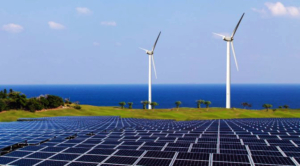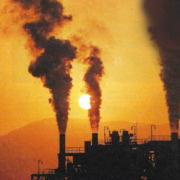A Climate Reality : Truth or Consequences
Our World is on brink of “catastrophic warming”, U.N. reports
In the first comprehensive report from the U.N. climate panel since the 2015 Paris Agreement, the UN reported this week… “Human activities have transformed the planet at a pace and scale unmatched in recorded history, causing irreversible damage to communities and ecosystems”.., according to one of the most definitive reports ever published about climate change.
The latest report from the U.N.’s Intergovernmental Panel on Climate Change provides world leaders with a gold-standard summation of modern climate science.
Leading scientists warned that the world’s plans to combat these changes are inadequate and that more aggressive actions must be taken to avert catastrophic warming. The same can be said for Hawaii’s less than transformative efforts to change, adapt, and survive climate-driven changes already underway.
A difficult global transition is happening right now, away from fossil fuels, deforestation, greenhouse-gas pollution and melting ice, and a global meltdown of the polar ice caps.
The report released Monday from the United Nations Intergovernmental Panel on Climate Change found the world is likely to miss its most ambitious climate target — limiting warming to 1.5 degrees Celsius (2.7 degrees Fahrenheit) above preindustrial temperatures — within a decade. Beyond that threshold, scientists have found, climate disasters will become so extreme that people will not be able to adapt.
Basic components of the Earth system will be fundamentally, irrevocably altered. Heat waves, famines, and infectious diseases could claim millions of additional lives before the century’s end.
The IPCC report shows humanity has reached a “critical moment in history,” IPCC chair Hoesung Lee said. The world has all the knowledge, tools, and financial resources needed to achieve its climate goals, but after decades of disregarding scientific warnings and delaying climate efforts, the window for action is rapidly closing.
Calling the report a “how-to guide to defuse the climate time-bomb,” Guterres announced on Monday an “acceleration agenda” that would speed up global actions on climate. Emerging economies including China and India — which plan to reach net zero in 2060 and 2070, respectively — must hasten their emissions-cutting efforts alongside developed nations, Guterres said.
Both the U.N. chief and the IPCC also called for the world to phase out coal, oil, gas, and deforestation, which are responsible for more than three-quarters of global greenhouse gas emissions.
The IPCC’s report concludes humanity has fundamentally and irreversibly transformed the Earth’s system. Emissions from burning fossil fuels and other planet-warming activities have increased global average temperatures by at least 1.1 degrees Celsius (2 degrees Fahrenheit) since the start of the industrial era. The amount of carbon dioxide in the atmosphere hasn’t been this high since archaic humans carved the first stone tools.
An Ocean-Climate Linkage: Hawaii in the crosshairs
Climate changes are no longer theory or speculation but scientific fact and are apparent to anyone paying attention to the world around them. We are witnessing an increasing sea-level rise, the by-products of the global melting of ice caps, and ocean heating. Rising sea levels and warming seas are an especially deadly and impactful combination for island states, like Hawaii.
Though much of the synthesis of the IPCC report echoes warnings scientists have issued for decades, the assessment is notable for the blunt certainty of its rhetoric. The phrase “high confidence” appears nearly 200 times in the 36-page summary chapter. Humanity’s responsibility for all the warming of the global climate system is described as an unassailable “fact.”
A recent global pattern has emerged that is translating into costly climate outcomes. As oceans warm, the climate for creating super hurricane events with more energy, crushing winds, pounding waves, and tidal surges has become more common – a new norm for weather science and prediction. These new climate-derived superstorm effects include slower movement, compounding and amplifying their effects on people, property, crops, commerce, and the social fabric of society.
The risks from even relatively low levels of warming are turning out to be much greater than scientists earlier predicted or anticipated — not because of any flaw in their research, but because human-built infrastructure, social networks, and economic systems have proved exceptionally vulnerable to even small amounts of climate change, the IPCC – UN report concluded. Fish populations are dwindling, farms are less productive, infectious diseases have multiplied, and weather disasters are escalating to unheard of extremes.
These recent and scientifically-derived climate change findings represent a special concern for Hawaii’s residents and in establishing state economic, social, and environmental priorities, ranging from today’s unprecedented storms and climate-driven hurricanes to subtle changes in weather, rain, and wind patterns. Climate changes are also no longer limited to rising temperatures, but to changes in the atmosphere, more specifically, changes in the historic jet stream and wind patterns.
Melting Ice Caps
The Science and theory of Global Warming date back more than 50 years, when melting ice caps were often cited as one of the first signs of a man-made warming planet that was real and dangerous to humanity.
Rapidly warming oceans are now cutting into the underside of the Earth’s widest glacier and posing a major sea-level-rise threat. Using an underwater robot at Thwaites Glacier, researchers have determined that warm water is getting channeled into crevasses in what the researchers called “terraces” — essentially, upside-down trenches — and carving out gaps under the ice. As the ice then flows toward the sea, these channels enlarge and become future potential breakpoints, where the floating ice shelf comes apart and produces huge icebergs.
These weak spots are like cracks in a windshield, said Oregon State University glaciologist Erin Pettit. One more blow and they could spiderweb across the entire ice shelf surface. “This eastern ice shelf is likely to shatter into hundreds of icebergs,” she said. “Suddenly the whole thing would collapse.”
The failure of the shelf would not immediately accelerate global sea level rise. The shelf already floats on the ocean surface, taking up the same amount of space whether it is solid or liquid. But when the shelf fails, the eastern third of Thwaites Glacier will triple in speed, spitting formerly landlocked ice into the sea. A total collapse of Thwaites could result in several feet of sea level rise, scientists say, endangering millions of people in coastal areas.
Similar outcomes are occurring within Greenland’s Ice Sheet, the largest ice mass in the Northern Hemisphere.
Global carbon budget running a deficit
At our current global pace of carbon emissions, the world will burn through its remaining “carbon budget” by 2030.
Doing so would put the long-term goal of keeping global warming to 1.5 degrees Celsius (2.7 degrees Fahrenheit) irrevocably out of reach.

Deep, rapid, and sustained greenhouse gas emission reductions across all sectors will be necessary if warming is to be limited by 1.5 degrees Celsius, the report says, noting that global emissions should already be decreasing and will need to be slashed almost in half by 2030.
The 1.5 degrees Celsius temperature threshold is widely recognized as crucial because so-called tipping points become more likely beyond this level. Tipping points are thresholds at which small changes can lead to dramatic shifts in Earth’s entire life support system.
Despite its stark language and dire warnings, the IPCC report sends a message of possibility, said Friederike Otto, a climate scientist at Imperial College London and a member of the core writing team for the report. “It’s not that we are depending on something that still needs to be invented,” she said. “We have all the knowledge we need. All the tools we need. We just need to implement it.”
Friederike Otto’s message to the world is also one all of Hawaii’s elected officials and utilities must heed; slow-walking Hawaii’s transition to a clean and equitable energy economy will be more costly to Hawaii’s residents, ratepayers, and shareholders, especially when compounded by inaction, delay, and bad policy.
 If we continue, as state energy policy, to promote energy outcomes in support of 20th century polluting energy options, then we do it at the public expense. Expense that is measured in missed opportunity for a lower cost statewide transformation to a sustainable and self-sufficient clean-energy economy. Time is no longer on our side, and repeating lessons already learned is no longer an economic or political option.
If we continue, as state energy policy, to promote energy outcomes in support of 20th century polluting energy options, then we do it at the public expense. Expense that is measured in missed opportunity for a lower cost statewide transformation to a sustainable and self-sufficient clean-energy economy. Time is no longer on our side, and repeating lessons already learned is no longer an economic or political option.




Well, ‘consequences’ of course! We see so called ‘leaders’ in government and industry wrestling with rhetoric and unfulfilled promises. What’s new? There seems to be little difference as long as dreams of unending growth on a finite planet continue to smother flickers of hope and reform. Then too, Nature must do what in every epoch, she has always done, upset the game board, clear the pawns and the kings alike. Start all over again.